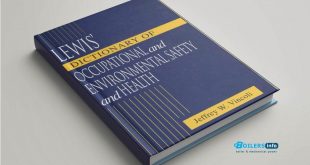Occupational Safety and Health (OSH) is a critical discipline aimed at ensuring the safety, health, and welfare of people at work. Whether in construction, manufacturing, energy, or healthcare, maintaining a safe work environment is not just a legal requirement—it’s a moral and economic imperative. This article explores the core principles and philosophies of OSH that guide safety professionals and organizations toward creating a healthier, safer, and more productive workplace.

1. The Importance of Occupational Safety and Health
Occupational injuries and illnesses can result in significant human suffering, financial losses, and productivity declines. According to the International Labour Organization (ILO), millions of people suffer workplace accidents and diseases each year. OSH is essential for:
- Preventing workplace injuries and fatalities
- Enhancing employee morale and productivity
- Ensuring legal compliance
- Reducing downtime and associated costs
2. Fundamental Principles of Occupational Safety and Health
Understanding and applying the following fundamental principles helps in building a solid foundation for workplace safety:
a. Risk Assessment and Hazard Identification
Every workplace has potential hazards. Identifying these hazards and evaluating risks through a systematic approach is the first step toward prevention. This includes:
- Workplace inspections
- Job safety analysis (JSA)
- Monitoring and reviewing existing controls
b. Prevention Through Design (PtD)
Safety must be built into processes and facilities right from the design phase. This philosophy focuses on eliminating hazards at the source rather than relying solely on protective measures.
c. The Hierarchy of Controls
To manage risks effectively, safety professionals follow a well-established order of controls:
- Elimination
- Substitution
- Engineering controls
- Administrative controls
- Personal protective equipment (PPE)
d. Continuous Improvement
Safety is not a one-time effort. Ongoing evaluations, safety audits, and feedback mechanisms help identify areas of improvement. The Plan-Do-Check-Act (PDCA) cycle is a commonly used tool in continuous OSH improvement.
3. Core Philosophies Behind OSH
A strong safety culture is shaped by certain guiding philosophies:
a. Safety is Everyone’s Responsibility
From top management to front-line workers, everyone plays a role in ensuring safety. A collaborative culture where employees feel empowered to report hazards is essential.
b. Prevention Over Reaction
Being proactive in managing risks saves lives and resources. Companies that invest in training, maintenance, and preventive measures often outperform others in safety records and productivity.
c. Zero Harm Philosophy
Many organizations aim for “zero harm,” a philosophy that believes all accidents and illnesses are preventable. While ambitious, this mindset drives continuous improvement and accountability.
d. Integration with Business Strategy
OSH should not be treated as a separate function. Integrating safety into the organization’s overall business strategy helps align goals and secure leadership commitment.
4. Legal and Ethical Foundations
Occupational Safety and Health laws exist in nearly every country. Compliance is mandatory and includes:
- Following national and international standards (e.g., OSHA, ILO, ISO 45001)
- Conducting safety training programs
- Ensuring proper documentation and reporting of incidents
Beyond legal requirements, OSH is grounded in ethics. Providing a safe work environment is a basic human right and a sign of organizational integrity.
5. Promoting a Positive Safety Culture
Developing and sustaining a positive safety culture involves:
- Leadership commitment
- Open communication
- Employee participation in safety decisions
- Recognition and reward systems for safe behavior
Conclusion &Book⬇️
The principles and philosophies of Occupational Safety and Health are vital to the success and sustainability of any organization. By identifying risks, designing safety into operations, engaging employees, and continuously improving, companies can achieve excellence in OSH performance. A strong safety culture not only protects workers—it boosts productivity, morale, and business performance.
 Boilersinfo Boiler and Mechanical Power Digital Library
Boilersinfo Boiler and Mechanical Power Digital Library





